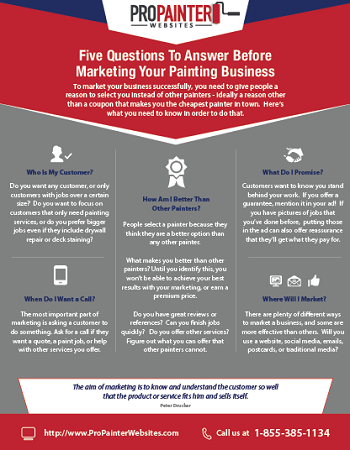Understand Just How Seasonal Conditions Affect The Success Of Industrial External Painting And Find Out The Ideal Periods To Ensure Durable End Results For Your Job
Understand Just How Seasonal Conditions Affect The Success Of Industrial External Painting And Find Out The Ideal Periods To Ensure Durable End Results For Your Job
Blog Article
Article Written By-Ford Bagger
When you're planning a business outside paint project, seasonal factors can make or damage your outcomes. You'll wish to take into consideration exactly how temperature level and moisture influence paint application and drying times. Choosing the right season can ensure your paint sticks appropriately and lasts longer. Yet which periods are genuinely the best for this sort of work? Let's check out the key elements that can influence your job's success.
The Effect of Temperature on Paint Application
When you're preparing a business external paint project, the temperature level can significantly influence how well the paint sticks and dries.
Ideally, you want to repaint when temperature levels range between 50 ° F and 85 ° F. If it's also cold, the paint might not treat properly, resulting in problems like peeling off or breaking.
On the flip side, if it's as well warm, the paint can dry also swiftly, stopping proper attachment and leading to an irregular finish.
mouse click the next site need to additionally think about the time of day; morning or late afternoon provides cooler temperatures, which can be extra favorable.
Constantly examine free painting estimate for the certain paint you're utilizing, as they commonly supply assistance on the ideal temperature range for optimum results.
Humidity and Its Result on Drying Times
Temperature isn't the only environmental aspect that influences your commercial external painting project; humidity plays a considerable role also. residential painting plymouth can decrease drying out times substantially, affecting the general high quality of your paint task.
When the air is filled with dampness, the paint takes longer to heal, which can cause issues like inadequate bond and a greater threat of mildew growth. If you're repainting on an especially damp day, be prepared for extended wait times in between layers.
It's critical to monitor regional weather conditions and strategy as necessary. Preferably, go for humidity degrees between 40% and 70% for ideal drying out.
Maintaining these factors in mind guarantees your job stays on track and delivers a lasting finish.
Best Seasons for Commercial Exterior Paint Projects
What's the most effective season for your commercial exterior paint projects?
Springtime and very early fall are generally your best bets. Throughout these periods, temperature levels are light, and moisture levels are commonly reduced, producing perfect problems for paint application and drying.
Prevent summertime's intense heat, which can create paint to dry too rapidly, bring about bad bond and coating. Likewise, winter season's cold temperatures can prevent proper drying out and healing, running the risk of the long life of your paint work.
Aim for days with temperatures between 50 ° F and 85 ° F for optimal outcomes. Bear in mind to inspect the neighborhood weather forecast for rainfall, as wet conditions can spoil your task.
Preparation around these variables guarantees your painting project runs efficiently and lasts longer.
Final thought
Finally, preparing your business outside paint jobs around seasonal considerations can make a considerable difference in the outcome. By scheduling work throughout the optimal temperatures and moisture degrees, you'll guarantee far better attachment and drying times. Keep in mind to watch on neighborhood weather report and select the right time of year-- springtime and very early autumn are your best bets. Taking these actions will assist you accomplish a resilient and specialist surface that lasts.
